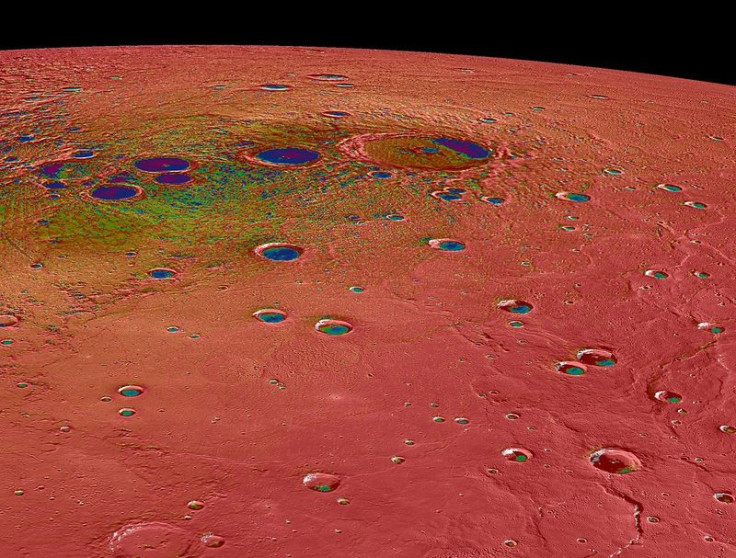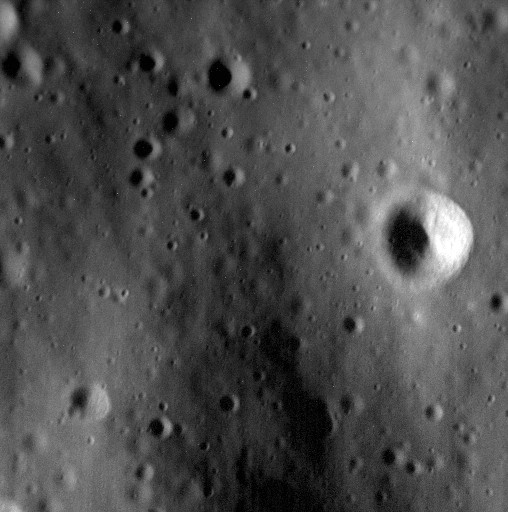Messenger spacecraft counting last days before crash on 30 April

In a planetary relay race, Nasa's Messenger probe is due to crash on to the surface of Mercury, leaving behind a 16m-wide crater which will be studied by the next probe BepiColombo arriving at the planet in 2024.
The BepiColombo is a joint European and Japanese venture and will, among other things, study the crater to understand the erosion rate on the surface of Mercury.
Calculations indicate that on Thursday (30 April) the force of the sun's gravity will finally pull Messenger on to the planet's surface at about 3.91km per second in a violent crash.
The event will not be visible in real time from Earth as it will be on the side of Mercury turned away from our planet.
Mission controllers at the Johns Hopkins University Applied Physics Laboratory (APL) in Laurel, Maryland, US, conducted the last of six planned manoeuvres on 24 April to raise the spacecraft's minimum altitude to extend orbital operations and delay its end.
The spacecraft's four largest monopropellant thrusters released gaseous helium to nudge the spacecraft to an orbit with a closest approach altitude of 18.2km.
The helium was originally carried to pressurize the fuel, but repurposed as a propellant when the craft ran out of fuel.
With propellant in its fuel tanks drying up, the spacecraft is every moment being pulled faster by the planet's gravity.

What Messenger uncovered
Most significant of its findings has been the suggestion of a trillion tonnes of frozen water on the permanently shadowed floors of craters at the planet's poles. Most of this was not there when the planet was formed but mostly bought in by colliding asteroids and comets.
As Messenger mapped Mercury's surface it discovered volatile chemicals such as potassium, sodium, sulphur and chlorine around asteroid and comet-impact sites. As an iron-rich planet, these chemicals were not expected.
"So Mercury probably did form as an iron-rich planet, which was later bombarded by asteroids and comets containing volatiles," Monash University's Emeritus Professor Andrew Prentice told broadcaster ABC.
Messenger also revealed wrinkles on the planet's surface, known as scarps, showing that Mercury has shrunk by more than seven km in radius since the solar system was formed.
The planet has cooled so much that its contraction became the dominant deformation process on its surface.
Mercury has an iron core proportionally bigger than Earth's occupying almost 50 per cent of its volume, twice that of earth.
Water, iron and volcanoes
"Just as the gas giants all formed beyond the snow line between Mars and Jupiter, where it's cold enough for water and ice to condense, Mercury formed at an iron line," says Prentice.
But what was surprising was a liquid iron core necessary to create the magnetic field seen on Mercury. How it remains a liquid is still unknown.
The magnetic field came as a surprise as scientists had believed that Mercury's iron core was completely solid.
Messenger also uncovered the planet's fiery volcanic past with its images showing long channels, hills, and vents that appear to have been formed by ancient volcanoes.

Since its launch in 2004 and a six and half year journey, Messenger arrived at Mercury on 18 March 2011 and has since then been orbiting the planet.
The 485kg probe Messenger (MErcury Surface, Space ENvironment, GEochemistry, and Ranging) is a Nasa-sponsored scientific investigation of the planet Mercury and the first space mission designed to orbit the planet closest to the Sun.
The Johns Hopkins University Applied Physics Laboratory built and operates the Messenger spacecraft.
There have been only two missions to Mercury with the first being Nasa's Mariner 10, launched in 1973 and in operation until 1975, when fuel was depleted and communication lost.
Messenger is the second probe sent to the tiny planet.
With temperatures ranging between extremes of 400C on the sun-facing side to -170C on the other, and a lack of atmosphere, the 4,880km-wide planet still remains a puzzle on many fronts.
© Copyright IBTimes 2025. All rights reserved.





















